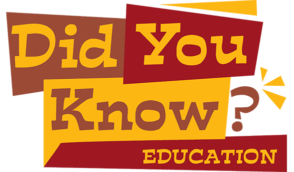The horses were restless, pawing the ground in the relentless heat. A shimmering haze hung over the desert, taunting the waiting riders and their thirsty steeds with the promise of water. In the distance, a pall of dust obscured the fighting. But the dust cloud was crawling aimlessly, not flying forward. It was obvious that the attack had failed – just as two previous attempts on nearby Gaza had been pushed back.
People had been fighting over this oasis on the edge of the desert for nearly 4000 years. The Book of Genesis in the Bible’s Old Testament mentions this place as a place of dispute. Abraham’s argument with Abimelech over who had rights to the water was settled with an oath and seven ewes there at the wells of Beersheba.
Now, on 31 October 1917, another history-making moment had arrived. Australian troops had ridden their horses to just outside the Turkish-held stronghold of Beersheba. Still recovering from the devastating defeat of Gallipoli, they were keen to fight the Turks on a new battleground.
Henry (known as Harry) Chauvel was in charge of the Australian troops. Under his command were 34,000 horsemen and cameleers from various parts of the British Empire as well as France and Italy. This is thought to be the largest group of mounted troops since those of Alexander the Great, over 2000 years earlier.
Early in the day, a bombardment and an attack by the British forces began the battle, then the New Zealand troops fought tenaciously to remove the Turks from their heavily fortified stronghold, aiming also to weaken the threat of their machine guns and snipers. These victories made way for the troops to charge on Beersheba.
It was late in the day, but Chauvel, the first Australian to rise to Lieutenant-General within the British forces, thought there was still a chance to take Beersheba. With only one hour of daylight left he ordered the Australian Light Horse regiments to charge.
In they went. Just 800 of them. They tore across the dusty plains so swiftly that gunners defending their stronghold in the town kept overshooting and missing the charging horsemen. The attacking force overwhelmed the surprised defenders.
Only thirty-one Australian horsemen were killed and 36 wounded in this remarkable victory. The Turkish army, however, suffered heavy casualties, with many hundreds dead and wounded as well as 700–1000 more who surrendered and were taken as prisoners of war.
Chauvel and his troops who took Beersheba were aware of the historical and biblical significance of this place still called by the name Abraham had given it thousands of years earlier. Shortly afterwards, the ANZACs were also involved in taking the city of Jerusalem from the enemies. In his scrapbook, Chauvel wrote the word Prophetic under a photo of Jerusalem, referring to the fact that people like Jeremiah and Amos in Old Testament times had prophesied (or foretold) that God would bring his people back to their land.
What had happened to remove the Jewish people from Jerusalem in the first place? God’s people had been scattered. The Roman Emperor Hadrian, back in the first century, had ordered Jerusalem to be destroyed. Christians and Jews were forbidden to enter the city on pain of death. The city had been under Muslim rule since the seventh century.
Yet God had promised in the Bible to return his chosen people to their own land.
According to an article in the Jerusalem Post on 29 October 2007, ‘… the Australian victory in 1917 set in train some remarkable events – the liberation of Jerusalem, the fall of the Ottoman Empire, the British Mandate in Palestine and ultimately the establishment of the State of Israel.’ The same article highlights a little-known fact: the timing of the Light Horse charge on Beersheba at 4:30 pm appears to have coincided with a historic decision made in London to support the establishment of the State of Israel (which would make it possible for Jewish people to live back in the land that God had given them, where they had historically had their home before being scattered for centuries). Although not officially made public until three days later, it seems that this decision was made at the same hour as the attack on Beersheba, on 31 October 1917.
Harry Chauvel’s Christian faith was strong. During all of his military campaigns and battles, he carried a copy of the Bible and read it regularly. His Bible – bound with wooden covers and decorated with illustrations made from an artist’s engravings – provided him with inspiration in difficult times and a sense of God’s care for his people throughout history. His family treasures this Bible to this day.
Written by Graham McDonald.
Resources and Further Reading:
The Holy Bible, New International Version (NIV), Genesis 21:22–31; Jeremiah 30:1–4; Amos 9:14–15
http://beersheba100.com.au/events/israel.html
Jill Curry, Victory! Beersheba 100th Anniversary, 2016

